Cultural Connection
The river unites the three fascinating cultures of the Tibetan civilization in the North, the sleepy villages of India in Arunachal Pradesh and Assam Valley and the bustling villages in the Delta of Bangladesh. The river is revered equally by the religious canvas of Hindus, Jains, Buddhists, Muslims, Sikhs, Christians and the Indigenous populace.
Phases of the River
The MV Mahabaahu cruises from October to May. During this period the ship and its passengers get to experience different phases based on when they’re cruising.
The river is high and strong in October and recedes gradually to mid-February adding sand bars to the landscape. The snow-fed tributaries gently start swamping the parched sand-scape in the latter half of February. The Brahmaputra in March and April starts withdrawing what it had so generously deposited; a tug of war is in action.
In May the Easterlies inch in with moisture from the Bay of Bengal and soon the monsoons start filling the belly of the river from July to mid-September. The mighty Brahmaputra during monsoons rises more than 35 feet and at places spreads for more than 35 km in width and bursts into several river channels. No two voyages on this river are ever the same; not even from one week to the next.
The changing form of Brahmaputra River is a phenomenon to be observed and absorbed as the mighty forces of nature play and pluck at each other.
The River & its Mythology
A drop of Brahma’s blood fell into a sacred fire and by Shiva’s will sprang Rudra, of dark hue, with five heads, ten hands and fifteen eyes. Rudra instantly departed to Shiva’s abode saying “I worship none other than that effulgence from which I sprang!’ Having thus spoken, he departed to Shiva’s abode. Legends contain scientific truth wrapped in easy-to-remember parables; protected by the aura of sanctity, passed unaffected down the generations; we believe that the mythic references are descriptions of five sources or headwaters, ten tributaries and 15 glistening peaks. It could also explain the fact that the putra (son) of Brahma is dark and turbid with silt and as destructive as Shiva, when in-spate.
The River on the Upstream Cruise
The ship peels away from the northern side of the historical 1.3 km wide Saraighat Bridge. Here the river is jammed between the Chitrachal hills on the northern bank and the southern bank is flanked by Nilachal Hills of Kamakhya. The river is the deepest from Kuruwa to Saraighat Bridge as it is restricted between the rocky shores and it can be 40 to 120 feet in depth.
The River on the Downstream Cruise
Our journey begins with a sun-downer sail at Neamati Ghat watching the gorgeous sunset. As our star dips below the horizon, the country boats, retreating cattle, trees and bamboo huts across the river stand defined in the warm golden to cool pink tones. Soon the Chinese fishing nets and the returning ferries are tinged in the primary deep blue.

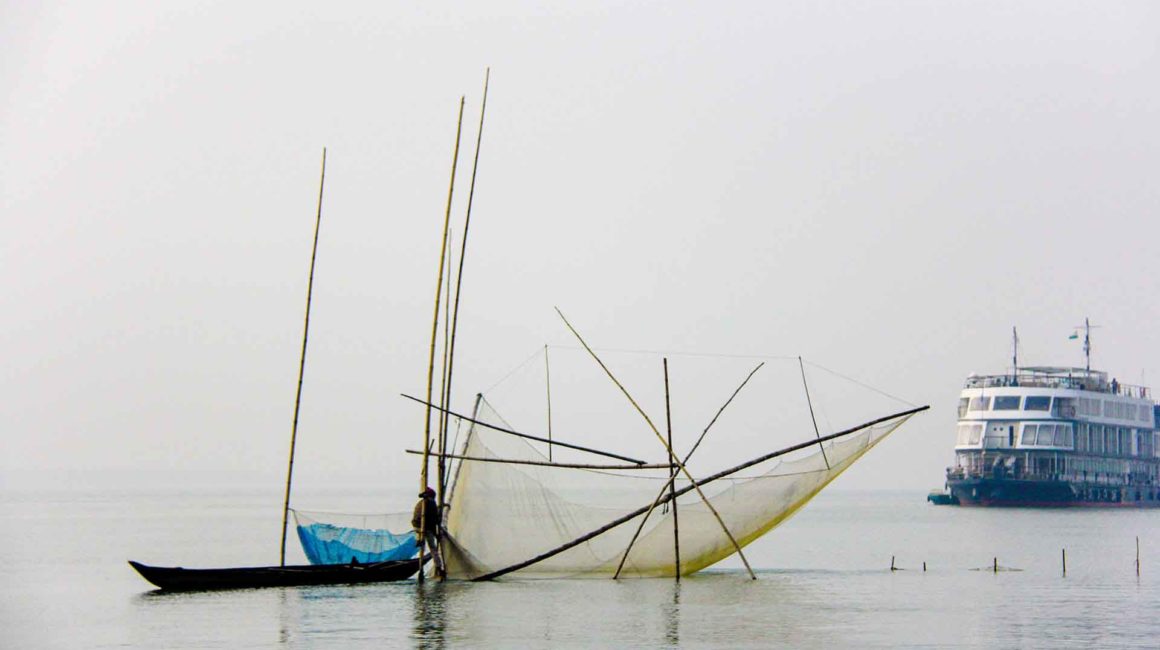

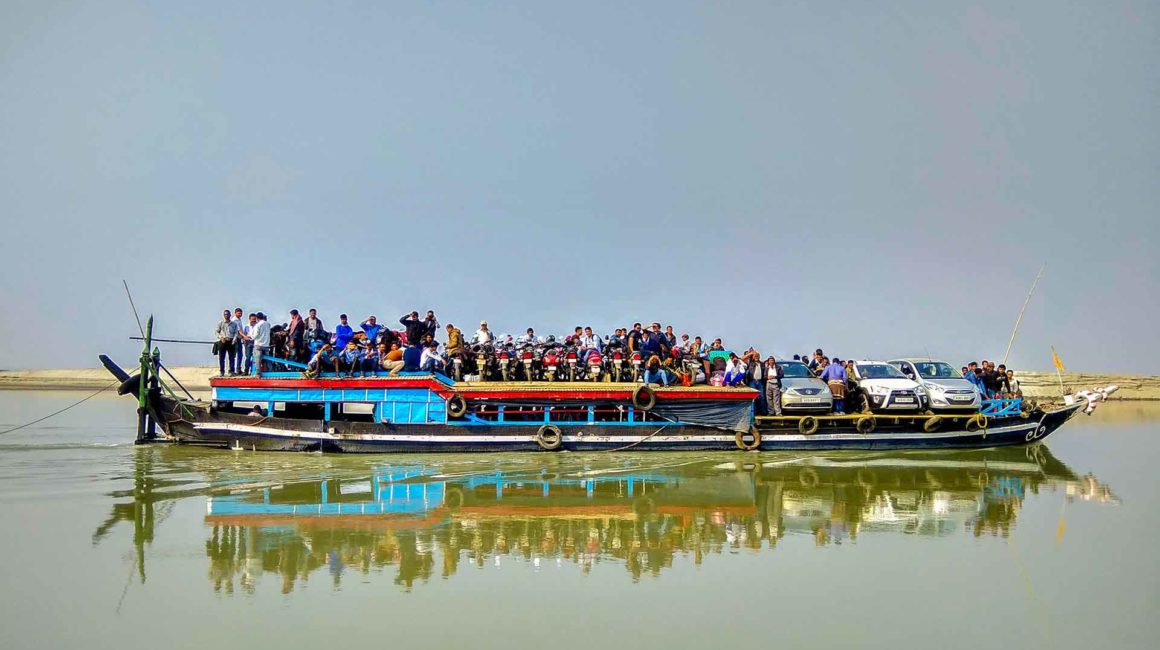
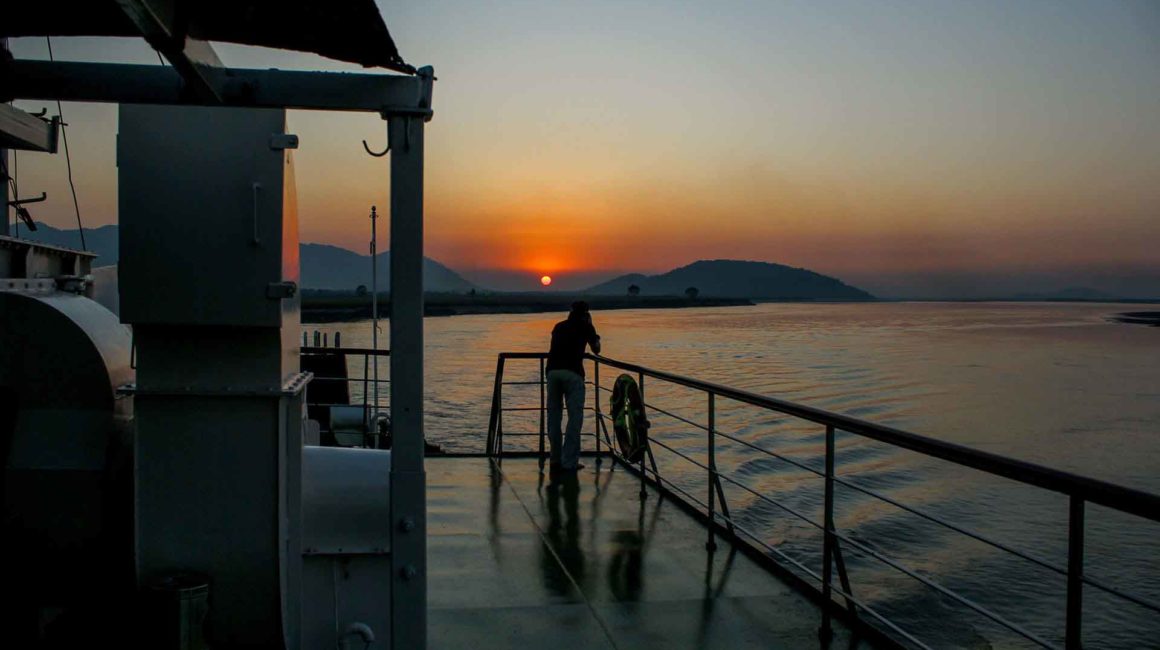

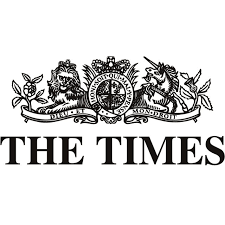





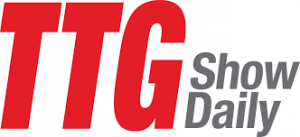








Leave a Reply
You must be logged in to post a comment.